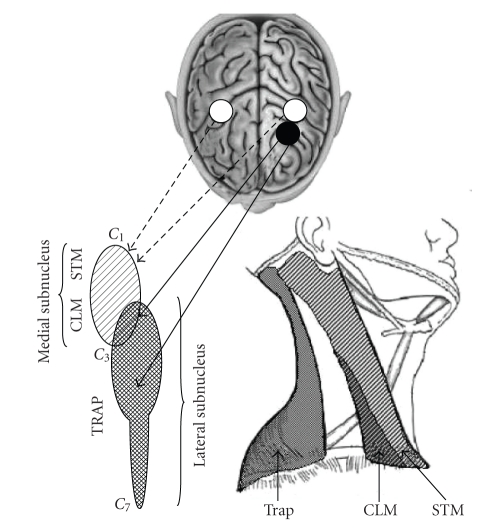Figure 9.
The accessory nucleus is composed of a medial and lateral subnucleus. The sternomastoid receives innervation from the medial subnucleus, which in turn receives bilateral projections from the primary motor cortex. The sternomastoid is thought to be exquisitely involved in oculomotor tracking. The cleidomastoid receives innervation from the caudal part of the medial subnucleus as well as the rostral lateral subnucleus. The trapezius receives innervation from the majority of the lateral subnucleus. The cleidomastoid and trapezius have contralateral cortical representations in the supplementary motor cortex and are believed to play a role in stabilization of the neck as well as locomotion in some species.

